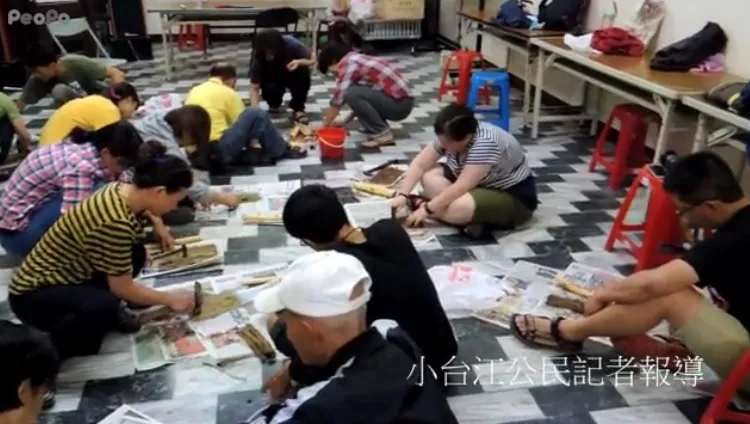Pounding out Taijiang’s cultural memories with paper mulberry
Paper mulberry trees are a common sight in Tainan City’s Taijiang Village. Due to its vigorous growth habit and ease of reproduction, the tree grows ubiquitously from fields and hills to roadsides and riverbanks. What’s more, the leaves are a favorite food of deer, hence it is also known as ‘deer’s tree’.
Bark from the paper mulberry tree is easily stripped off in one piece and becomes highly malleable after being soaked in water and pounded, thereby lending itself to the manufacture of clothing. Additionally, indigenous people have used it to produce rope and paper for generations. Shen Jie-wen (沈介文), a teacher at Taijiang Branch of Tainan Community University, has designed a course in making clothes from paper mulberry. He hopes that the course will help students build a closer relationship with trees and raise awareness about environmental issues.
Pounding out Taijiang’s cultural memories with paper mulberry
URL:https://www.peopo.org/news/329567
(以下是中文對照)
槌製構樹皮,敲出台江文化記憶

台南市安南區台江村落最常見到的樹木「構樹」,它生長在平原、丘陵、山坡路邊、河邊雜木林中。因為,生長力旺盛,容易繁殖茁壯,處處可以見到構樹的蹤跡。而且,它的樹葉是鹿最愛吃的食物,所以,又稱鹿仔樹。
構樹的樹皮很容易整片一長條地被剝取下來,經過泡水、搥擣使它變得柔軟,製成樹皮衣。除了樹皮衣之外,也是早期原住民編織繩索的主要材料,還有造紙的材料之一。台南社大台江分校老師沈介文,設計了一堂製作樹皮衣課程,希望藉由敲敲打打的過程,讓學員打出樹木跟人類之間連密的情感,進而關心環境議題。

回應文章建議規則: